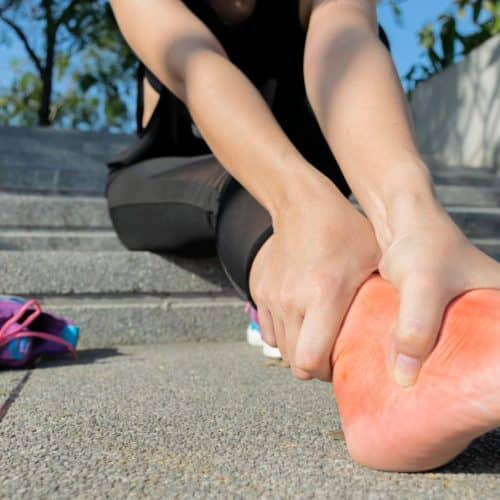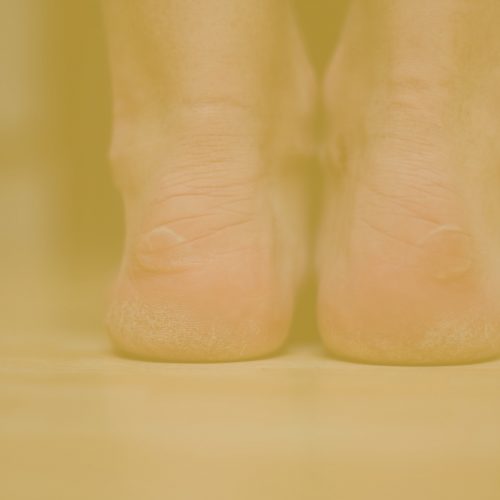Type 2 diabetes is a chronic condition that affects how your body metabolises sugar (glucose), the body’s main fuel source. This condition can lead to various complications, and one of the areas it can significantly impact is the feet. Recognising the signs of Type 2 diabetes in your feet is crucial for managing the condition effectively and preventing further complications.
Signs of Type 2 Diabetes Affecting Your Feet
- Numbness: Numbness in the feet is often one of the first signs of diabetic neuropathy, a type of nerve damage common in people with diabetes. This numbness can make it difficult to feel pain, heat, or cold, leaving individuals unaware of injuries or infections.
- Tingling Sensation: A tingling or prickling sensation, often described as ‘pins and needles,’ can indicate nerve damage due to high blood sugar levels. This sensation can be constant or intermittent and is usually felt in the toes before progressing to other parts of the feet and legs.
- Burning Sensation: People with diabetes may experience a burning sensation in their feet, primarily at night. This painful symptom is also a result of diabetic neuropathy and can range from mild to severe, affecting sleep and quality of life.
- Pins and Needles: This uncomfortable sensation is another manifestation of nerve damage in the feet. It can be sporadic or persistent, often accompanied by other symptoms like numbness and tingling.
- Loss of Sensation: The loss of the ability to feel pain or temperature changes can be particularly dangerous as it increases the risk of unnoticed injuries, burns, or frostbite, leading to complications like infections and ulcers.
- Temperature Sensitivity: Difficulty distinguishing between hot and cold sensations is another sign of diabetic neuropathy. This can result in burns or frostbite, especially if the individual cannot realise the extreme temperatures.
- Skin Colour Changes: Changes in the colour of the skin on the feet can indicate poor blood circulation or developing sores or ulcers. The skin may appear redder, bluer, or purpler than usual, signalling underlying issues that require attention.
- Loss of Hair on Feet: Reduced blood flow to the feet due to diabetes can result in hair loss on the legs and feet. This is often a sign of peripheral artery disease (PAD), a common condition in people with diabetes, which can lead to further complications if not addressed.
- Changes in Foot Shape: Over time, diabetes can cause changes in the structure and shape of the feet, leading to deformities like Charcot’s foot. This condition occurs when the bones in the foot weaken and fracture, causing the foot to take on an abnormal shape. Early detection and treatment are crucial to manage this condition effectively.
Each of these signs manifests the underlying complications of Type 2 diabetes, primarily due to uncontrolled blood sugar levels leading to nerve damage and poor blood circulation.
Recognising these signs early and seeking appropriate medical intervention can prevent further complications and ensure better management of diabetes and foot health. Regular foot examinations, proper foot care, and optimal blood glucose levels are paramount in managing these symptoms and maintaining overall foot health in individuals with Type 2 diabetes.
Additional Key Points
1. Foot Ulcers and Sores
Foot ulcers are open sores that can develop on the feet, primarily due to reduced sensitivity from nerve damage, poor circulation, and prolonged pressure on one part of the foot. People with diabetes are at a higher risk of developing foot ulcers due to impaired healing capabilities. These ulcers can become infected easily, and if left untreated, the infection can spread, leading to more severe complications, including the risk of amputation. Regular inspection of the feet for any cuts, blisters, or sores and immediate treatment are crucial to prevent the development of ulcers.
2. Swelling and Fluid Retention
Swelling in the feet and ankles, also known as edema, is common in individuals with diabetes. This can be due to various reasons such as poor circulation, heart, liver, or kidney disease, or medication side effects. Managing fluid retention involves addressing the underlying cause, maintaining a balanced diet low in salt, and elevating the legs to promote fluid drainage. Persistent or severe swelling requires immediate medical attention to rule out serious underlying conditions.
3. Dry and Cracked Skin
People with diabetes often experience extremely dry skin on their feet due to nerve damage affecting the sweat glands. This lack of moisture can lead to the skin cracking, creating openings for bacteria and fungi to enter, increasing the risk of infection. Regular moisturising, staying hydrated, and avoiding exposure to extreme temperatures can help manage dry and cracked skin. It is also important to avoid soaking the feet for prolonged periods as it can further dry out the skin.
4. Calluses and Corns
Calluses and corns are thickened areas of skin that can develop due to excessive pressure or friction on the feet. For individuals with diabetes, these can progress to ulcers if not managed properly. Regularly wearing properly fitting shoes, using protective pads, and avoiding walking barefoot can help prevent the formation of calluses and corns. It is also crucial to avoid over-the-counter acid-based treatments and instead seek professional advice for safe removal and management.
These key points emphasise the various manifestations and complications that can arise in the feet due to Type 2 diabetes. Managing these conditions involves a combination of regular foot care, timely medical intervention, lifestyle modifications, and optimal management of blood glucose levels.
By paying close attention to these aspects, individuals with diabetes can significantly reduce the risk of severe foot complications and maintain better overall health. Regular check-ups and consultations with healthcare providers are essential to monitor and manage these conditions effectively and to tailor care based on individual needs and health status.
Importance of Foot Care in Diabetes
Proper foot care is paramount for individuals with diabetes as it prevents severe complications such as foot infections, ulcers, and even amputations. The high blood sugar levels associated with diabetes can damage various body systems, including nerves and blood vessels, particularly in the feet. Here’s a deeper look into why foot care is so vital for people with diabetes:
- Prevention of Diabetic Neuropathy: Regular foot care can help in the early detection and management of diabetic neuropathy. In this condition, high blood sugar levels damage the nerves, often leading to numbness, tingling, and pain in the feet. Managing blood sugar levels and regular foot examinations can help prevent the progression of this condition.
- Avoidance of Foot Ulcers and Infections: Due to reduced sensitivity from nerve damage, people with diabetes may not notice cuts, blisters, or sores on their feet, which can develop into ulcers and become infected. Regular inspection, cleaning, and protection of the feet can prevent the development of ulcers and subsequent infections.
- Enhanced Blood Circulation: Proper foot care, including regular exercise and avoiding sitting cross-legged for extended periods, can promote better blood circulation in the feet, reducing the risk of complications due to poor blood flow, such as delayed wound healing and increased susceptibility to infections.
- Early Detection of Foot Deformities: Regular foot examinations can aid in the early detection of changes in foot shape and structure, such as those seen in Charcot’s foot, allowing for timely intervention and management to prevent further deformity and complications.
- Optimal Foot Hygiene: Maintaining foot cleanliness by washing feet daily, drying them thoroughly, especially between the toes, and keeping the nails trimmed can prevent various foot problems like fungal infections and ingrown toenails.
- Appropriate Footwear: Wearing well-fitting, comfortable shoes and socks can prevent excessive friction and pressure on the feet, reducing the risk of blisters, calluses, and other foot problems. It is also crucial to avoid walking barefoot to prevent injuries.
- Regular Professional Check-ups: Regular consultations with healthcare providers or podiatrists are essential for professional examination of the feet, addressing any concerns, and receiving advice on proper foot care practices based on individual health conditions and needs.
- Management of Blood Glucose Levels: Maintaining blood glucose levels within the recommended range is fundamental in preventing the various complications of diabetes, including those affecting the feet. Proper medication, diet, and lifestyle choices are crucial in managing blood glucose levels effectively.
The importance of foot care in diabetes cannot be overstated. By adopting regular and proper foot care practices, individuals with diabetes can significantly reduce the risk of severe foot complications, improve their quality of life, and ensure better overall health. The combination of self-care, professional medical advice, and optimal management of diabetes is the cornerstone in maintaining healthy feet in individuals with this condition.
Conclusion
Diabetes type 2 may substantially influence foot health, and if the condition is not handled appropriately, it can lead to various issues. Recognising the early warning signals, such as tingling, numbness, and changes in skin colour, can help with early intervention and treatment of the condition. Taking care of one’s feet regularly, ensuring that one’s blood glucose levels are appropriate, and going in for frequent checkups are all extremely important in preventing serious issues associated with diabetes.
It is important to remember that early identification and therapy of diabetes-related foot issues can considerably enhance the quality of life and contribute to maintaining healthy feet. If you experience any of the symptoms described above, or if you are concerned about the health of your feet, you should seek immediate medical attention from a qualified medical expert or a podiatrist.









